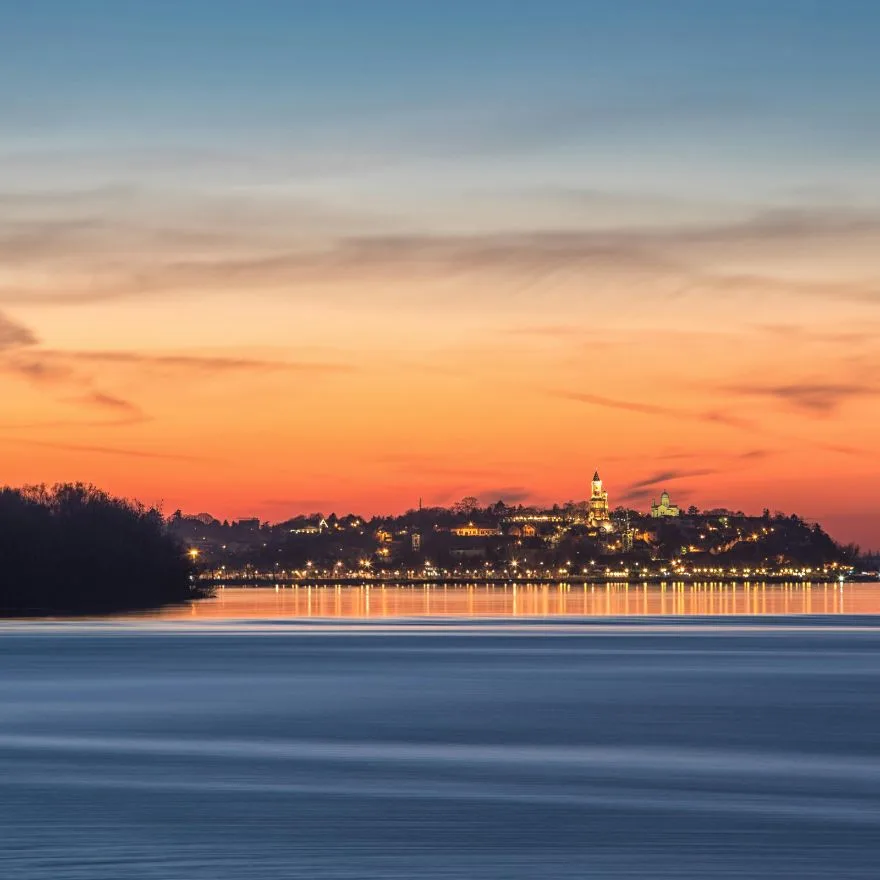
As I stand atop the ancient walls of Belgrade Fortress, watching the sun paint the confluence of the Sava and Danube rivers in shades of amber, I understand why this city has captured the hearts of travelers, conquerors, and dreamers for over two millennia. Belgrade, Serbia’s vibrant capital, isn’t just a destination—it’s a living, breathing testament to resilience, where layers of history dance with modern energy in an enchanting urban waltz.
The White City’s Story
Belgrade’s story begins over 7,000 years ago, making it one of Europe’s oldest continuously inhabited cities. The name “Belgrade” or “Beograd” literally means “White City,” derived from the white limestone walls that once gleamed like a beacon along ancient trade routes. Through centuries, the city has been contested by 40 armies and rebuilt 44 times, each rebirth adding another fascinating layer to its cultural tapestry.
When to Embrace Belgrade’s Spirit
While Belgrade’s charm persists year-round, spring (April to June) and autumn (September to October) wrap the city in perfect traveling conditions. During these months, mild temperatures and golden light illuminate the city’s architecture, while sidewalk cafés buzz with the distinctive Serbian practice of “gostoprimstvo” (hospitality). Summer can be quite hot and humid, while winter, though magical with snow, can be bitingly cold—though the warm rakija (fruit brandy) and cozy kafanas (traditional restaurants) offer perfect refuge.
5 Must-Visit Places That Will Capture Your Soul
1. Kalemegdan Fortress and Park
Standing proudly at the confluence of two mighty rivers, Kalemegdan is more than just Belgrade’s most important historical monument—it’s the heart of the city’s soul. The fortress has witnessed countless battles and transformations since Celtic times, but today it offers peaceful sanctuary. Wander through its ramparts at sunset, when the stone walls glow golden and the view of the river confluence creates nature’s perfect artwork. The surrounding park, Belgrade’s largest green oasis, comes alive with chess players, artists, and lovers strolling beneath centuries-old trees.
2. Skadarlija Quarter
Step into the bohemian heart of old Belgrade in Skadarlija, where cobblestone streets whisper tales of poets, musicians, and dreamers. This preserved historic district dates back to the 1830s and has been Belgrade’s artistic quarter since the late 19th century. Today, its charm persists in vintage lampposts, flower-filled windowsills, and traditional kafanas where the sounds of Serbian folk music spill onto the street. Here, time slows down, and every meal becomes a celebration of life.
3. Saint Sava Temple
Rising majestically above the city skyline, the Temple of Saint Sava is one of the world’s largest Orthodox churches and a symbol of Serbian spiritual identity. Its brilliant white marble and granite facade, topped with gleaming golden crosses, creates an awe-inspiring sight. The temple’s interior, adorned with intricate mosaics, tells the story of Saint Sava, Serbia’s most important religious figure. Even for non-religious visitors, the sheer scale and beauty of this monument inspire contemplation.
4. Nikola Tesla Museum
In a city that bridges past and future, the Nikola Tesla Museum stands as a testament to human ingenuity. Housed in a beautiful 1920s villa, the museum celebrates Serbia’s most famous scientist. Here, you can witness Tesla’s revolutionary inventions through interactive displays and original documents. The museum doesn’t just showcase technology—it sparks wonder about human potential and the power of dreams.
5. Zemun Quay
Once a separate city, Zemun offers a different perspective on Belgrade’s story. Its Mediterranean-style promenade along the Danube, lined with fish restaurants and cafés, feels worlds away from downtown Belgrade’s energy. Climb the Gardoš Tower, a millennia-old landmark, for panoramic views of both Zemun and Belgrade. The tower’s architecture reflects Hungarian influence, reminding us of the region’s complex historical tapestry.
Savoring Serbian Soul Food
Belgrade’s cuisine tells its own story of cultural crossroads, where Ottoman, Hungarian, and Slavic influences create a unique gastronomic identity. Start your day with burek, flaky pastry filled with cheese or meat, alongside yogurt from the local dairy. For lunch, dive into ćevapi, grilled meat rolls served with fresh bread, kajmak (clotted cream), and ajvar (red pepper relish).
Don’t miss sarma (cabbage rolls) or karađorđeva šnicla (rolled schnitzel stuffed with kajmak), named after a Serbian revolutionary leader. Vegetarians will find solace in prebranac (baked beans with caramelized onions) and various fresh salads, especially srpska salata with tomatoes, cucumbers, and onions.
End your meals with Turkish coffee and traditional desserts like baklava or reforma torta, a chocolate walnut cake that’s pure indulgence.
Travel Tips for Soaring Smoothly
- Transportation: Belgrade’s public transportation network is extensive but can be confusing for newcomers. Download Moovit app for real-time navigation. Alternatively, taxis are affordable—just ensure they’re official (look for TX plates) or use CarGo, Belgrade’s ride-sharing app.
- Language: While younger Belgradians often speak English, learning a few Serbian phrases goes a long way. “Hvala” (thank you) and “Molim” (please) will earn you warm smiles.
- Currency: Serbia uses Serbian Dinars (RSD). While some places accept euros, you’ll get better value using local currency. ATMs are plentiful, but inform your bank about travel plans.
- Coffee Culture: Coffee isn’t just a drink here—it’s a social institution. Don’t rush your coffee; it’s meant to be savored over long conversations.
- Safety: Belgrade is generally very safe for travelers. Still, exercise normal precautions and watch for tourist-targeting scams, particularly in busy areas.
The Spirit of Belgrade
What makes Belgrade truly special isn’t just its sights or tastes—it’s the intangible spirit that permeates every corner. It’s in the way strangers welcome you into conversation at a kafana, the proud resilience reflected in its architecture, and the infectious energy of its nightlife along the Savamala riverfront.
This is a city that teaches us about resilience, about rising from ashes stronger than before, about embracing life with passion despite—or perhaps because of—its scars. Every stone in Belgrade’s streets tells a story of survival, creativity, and the unquenchable human spirit.
As my time in Belgrade draws to a close, watching the sunset paint the white city in shades of gold, I understand that some places don’t just enter your travel diary—they enter your soul. Belgrade, with its complex history, warm hearts, and unstoppable spirit, is definitely one of them.
So come to Belgrade not just as a tourist, but as a seeker of stories, a lover of life, and a believer in the power of resilience. Let the white city work its magic on you, as it has done for countless travelers through the centuries. After all, isn’t that what travel is truly about—letting a place transform you, one story at a time?
